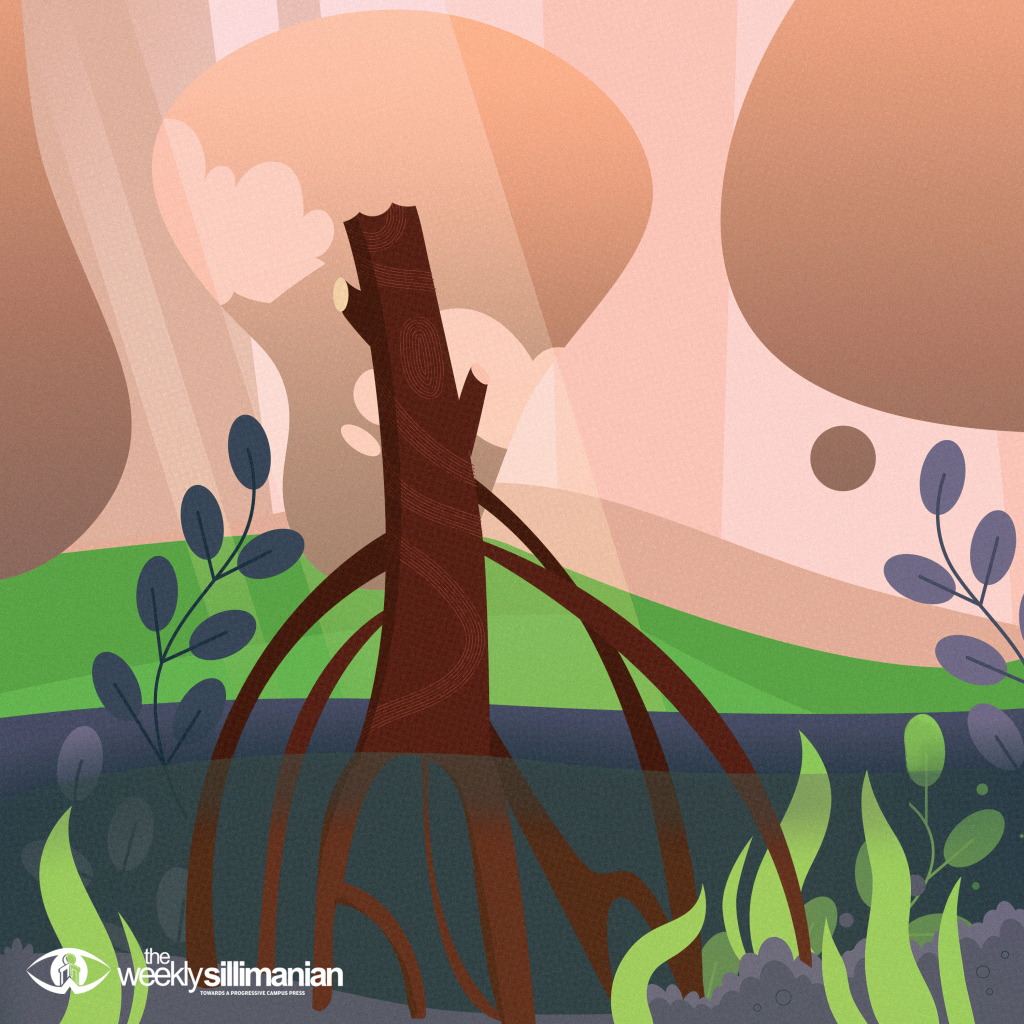By Angel Lea J. Regalado | March 17, 2021

Many students have had a school field trip involving the planting of mangroves, or simply visiting a local mangrove forest. Across the Philippines, mangrove planting projects have been conducted. They are supposed to promote the importance of mangroves in protecting our coastlines from the damage brought upon by harsh weather conditions.
We were taught the wonders of what mangroves can do from protecting our coastlines to increasing fish population. But what if we have too much of a good thing? The Department of Environment and Natural Resources has ordered a stop in planting mangroves on seagrass beds because it causes a decrease in fish population. Are mangroves really the cure-all we thought they would be?
What This Means for Our Country
Seagrass beds are as important as mangrove forests. These seagrass beds provide homes and feeding grounds for marine species such as different types of fish, mollusk, and invertebrates. Not only that, seagrass beds also act as a buffer for strong waves while also aiding to maintain good water quality. Fisheries are a large part of the economy especially for coastal areas. The damage of the ecosystem in these seagrass beds can lead to lesser fish populations and lesser abundance of marine species.
The more well known coastal ecosystems are mangroves. Mangroves also act as a buffer between our shorelines and large waves, they also provide protection and homes to different marine species. Mangrove planting projects were conducted across the country especially after the strong effects of recent typhoons. An example of this would be in the island of Bantayan, where mangrove planting activities were initiated as the Typhoon Haiyan, locally known as Typhoon Yolanda, struck the area in the year 2013.
With the benefits brought by both ecosystems, the problem lies in the implementation of these mangrove planting activities. One issue with these plantation activities is that some of them are inconsiderate of other ecosystems. These mangroves are planted on these seagrass beds that obstruct the natural ecosystem present, causing issues in marine species. In a study conducted in Bantayan Island, barangay coastlines that had mangroves planted were found to have smaller areas of seagrass beds. There is also an issue on the species of mangroves being used in these planting activities. These activities tend to plant Rhizophora mangroves forests in areas that are not their natural habitat, resulting in stunted growth or the death of these plants.
What We Should Do Instead
Now we are presented with the dilemma of what to do as both seagrass beds and mangroves are important, and one cannot be considered a replacement for the other. What we could do however, is to call for different causes. There is an urgent need to call for the rehabilitation of these seagrass seabeds to recover their ecosystems. We also need to demand stricter enforcement policies that protect both mangrove forests and seagrass beds. There is also an importance in shedding light on the lack of sustainability in these planting projects. A lot of planting projects conducted by different schools and organizations are left unmaintained and under monitored, which leads to these mangrove forests not surviving for that long.
We are far from perfecting in developing ways to protect not only ourselves from natural calamities but also our environment from getting destroyed, but what matters is that we continue to listen to science and work from there.
Sources:
Codilla, M. (2015, September 17). DENR told to stop planting mangroves in seagrass beds. https://cebudailynews.inquirer.net/68698/denr-told-to-stop-planting-mangroves-in-seagrass-beds?fbclid=IwAR2QMjbNRu7vlDesZRRiBn9jAAE42UUl4JsqxbJjct6gZfPtUeshcOwC0i0.
Mendoza, A.R.R., Patalinghug, J.M.R. & Divinagracia, J.Y. The benefit of one cannot replace the other: seagrass and mangrove ecosystems at Santa Fe, Bantayan Island. j ecology environ 43, 18 (2019). https://doi.org/10.1186/s41610-019-0114-7


